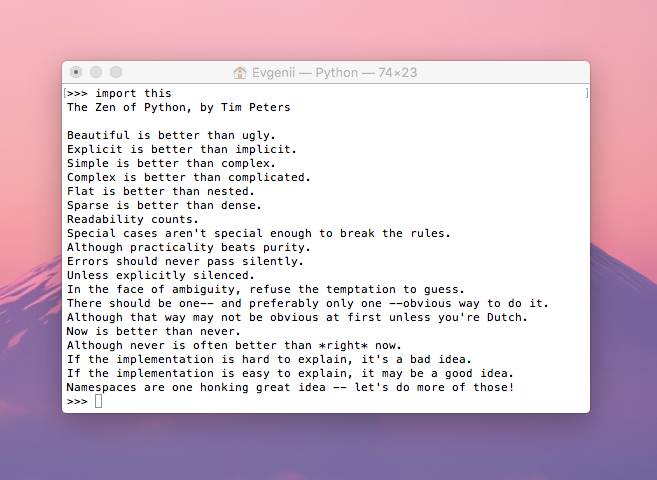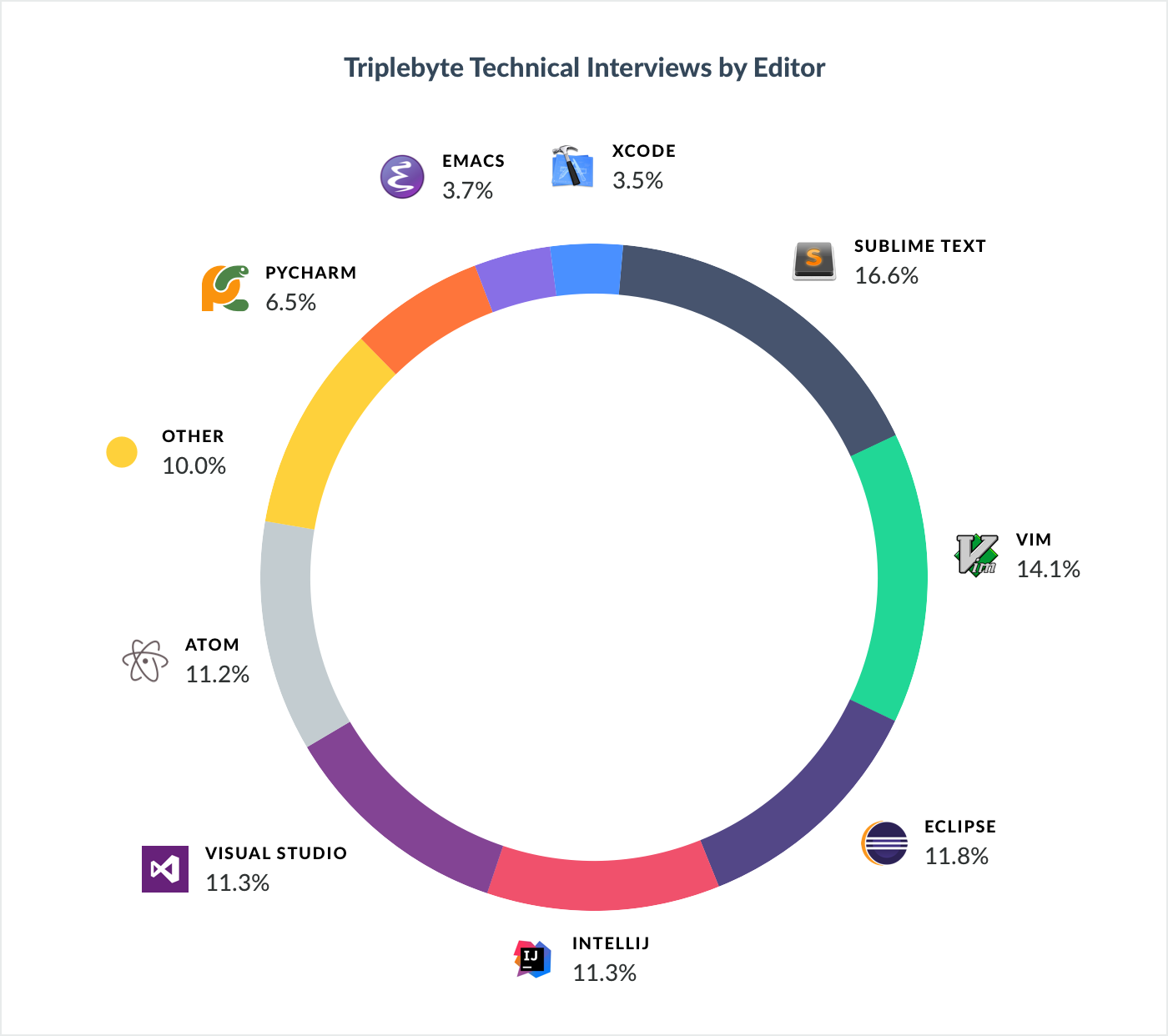How not to become a Python-developer
What does the track to learn programming in Python from scratch look like? Where to start? What to focus on? How not to lose interest?
For six months I have been looking for answers to these questions, carefully researching the subject area. I found a lot of useful tips. Especially in the article by Vasily Bolshakov and Hexlet . But I lacked structure. Knowledge grew from all sides and turned into a bunch. To structure the learning process and assess its scope, I put together a plan.
When composing the program, I was guided by the philosophy of Tim Peters, who formulated The Zen of Python :

I am a beginner in development, so my journey started from the very beginning. At the moment I have passed about half. Most likely, I missed something, I didn’t figure it out properly. If you want to share experiences or advice, feel free to write in the comments. It is also important to note that the learning track is designed for Mac OS users. Other platforms have their own characteristics, we will not talk about them.
')
The program is divided into steps. The sequence is conditional. Within each step, there are tasks with an asterisk — desirable, but optional.
I have two goals: quickly analyze data and create prototypes for testing ideas. For this, it is enough for me to know several suitable libraries, understand someone else's code and write my own a little. What is your goal?

Selection of developers interviewed at Triplebyte

Python on one picture
Developer Development Map
Books "for all times"
Thanks for the practical comments: Andrei Sverdlov, cl0ne , DaneSoul , s_suhanov , KoMePcAHT , Singaporian
For six months I have been looking for answers to these questions, carefully researching the subject area. I found a lot of useful tips. Especially in the article by Vasily Bolshakov and Hexlet . But I lacked structure. Knowledge grew from all sides and turned into a bunch. To structure the learning process and assess its scope, I put together a plan.
When composing the program, I was guided by the philosophy of Tim Peters, who formulated The Zen of Python :
Simple is better than difficult
Difficult is better than confusing
Practicality is more important than perfection
Mistakes should never be silenced.
Now is better than never ...

Plan of the education
I am a beginner in development, so my journey started from the very beginning. At the moment I have passed about half. Most likely, I missed something, I didn’t figure it out properly. If you want to share experiences or advice, feel free to write in the comments. It is also important to note that the learning track is designed for Mac OS users. Other platforms have their own characteristics, we will not talk about them.
')
The program is divided into steps. The sequence is conditional. Within each step, there are tasks with an asterisk — desirable, but optional.
1. Understand why you need it
I have two goals: quickly analyze data and create prototypes for testing ideas. For this, it is enough for me to know several suitable libraries, understand someone else's code and write my own a little. What is your goal?
2. Make friends with the command line
- Learn the basics of working with Bash
- Stuff cones with Git: a simple guide , a solid Pro Git , cool Oh shit, git!
- * Understand SSH
3. Set up the development environment and work environment
- Start with a suitable text editor: Sublime Text , Atom ...
- Lose faith in yourself the first time faced with Vim
- Grow to IDE

Selection of developers interviewed at Triplebyte
- Create a virtual environment
- Put the package manager
- * Start using virtualization
- * Meet the Docker
- * Learn about configuration management systems
“I’m a huge believer in learning how to do it through the job where I can go through my skills through Deliberate Practice” Robert Chang
4. Examine Python syntax and data structures in practice.
- Read Python Deliberate Practice for inspiration and select practice projects.
- Do not szhkovkov in studying the documentation . Master the data structure . To fix the studied, solving problems on Pitontoytor or Sololyorn
- Learn to make out the code and notice the gorilla
- Structure projects
- Master the built-in functions
- Understand the PLO
- Touch the functional programming
- * Participate in an open project
For those who love online courses

5. Browse libraries
- Take a look at the awesome python selection
- Explore libraries for data analysis: numpy , scipy , pandas , matplotlib , seaborn , scikit-learn
- Learn to work with json
- Understand requests , scrapy , Beautiful Soup
6. Feel the database
- Learn to write SELECT queries of average complexity
- * Get to know relational algebra
Additionally
Python on one picture
Developer Development Map
Books "for all times"
Thanks for the practical comments: Andrei Sverdlov, cl0ne , DaneSoul , s_suhanov , KoMePcAHT , Singaporian
Source: https://habr.com/ru/post/350748/
All Articles